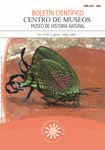Authors
Abstract
This article presents the study of the activity and feeding pattern of a wild group of brown capuchin monkeys (MC-1) in a forest sector of the Tinigua National Natural Park (Meta, Colombia). This group was provisioned daily with a limited amount of food, usually bananas, for scientific purposes for more than 10 years; therefore, enjoying a food resource that did not vary spatially or temporarily. Using scan sampling, 971 hours of troop observation were completed during six months in 1995-96. MC-1 invested 55.2% of their time foraging, followed by movement (13.8%), socially interaction (13%), and rest (12.1%). Waiting for provisioned food was named “alert,” and the monkeys spent 5.9% of their time engaged in this activity. The group showed an omnivorous diet, consuming principally arthropods (60.8%) and fruits (27.2%), but also vegetables parts (10.4%) and other items (1.6%). MC-1 fed on 60 plants species, and consumed small vertebrates, eggs and termites’ nests, among other items. Activity and feeding pattern varied when the group was provisioned, principally because during the mornings, MC-1 invested more time searching for arthropods, and presented low percentages of time foraging, contradicting the behavior usually reported for the species. The food offered to MC-1 partially replaces the fruit requirements for this troop, letting them increase their consumption of arthropods, decrease their foraging time, and enabling more time for other activities including rest and social interactions.
References
BROWN, A. & ZUNINO, G., 1990. Dietary variability in Cebus apella in extreme habitats: evidence for adaptability. Folia Primatol., 54: 187-195.
CANT, J. & TEMERIN, A., 1984. A conceptual approach to foraging adaptation in primates: 316-339 (en) RODMAN, P. & CANT, J. (eds.) Adaptation for foraging in nohuman primates. Columbia University Pess, New York.
CHIVERS, D. & RAEMAERKERS, J., 1986. Natural and synthetic diets of malayan gibbons: 39-56 (en) ELSE, J. & LEE, P. (eds.) Primate ecology and conservation, vol. 2. Cambridge University Press, Cambridge.
DEFLER, T., 2003. Primates de Colombia. Serie de Guías Tropicales 4. Conservación Internacional, Bogotá, D.C.
DUMOND, F., 1968. The squirrel monkey in a seminatural environment: 88-146 (en) ROSENBLUM, L. & COOPER, R. (eds.) The squirrel monkey. Academic Press, New York.
FORTHMAN, Q., 1986. Activity budgets and the consumption of human food in two troops of baboons, Papio anubis, at Gilgil, Kenya: 221-228 (en) ELSE, J. & LEE, P. (eds.) Primate ecology and conservation, vol. 2. Cambridge University Press, Cambridge.
FRAGASZY, D., VISALBERGHI, E. & FEDIGAN, L., 2004. The complete capuchin, the biology of the genus Cebus. Cambridge University Press, Cambridge.
FREESE, C. & OPPENHEIMER, J., 1981. The capuchin monkey, Genus Cebus: 331-390 (en) COIMBRA-FILHO, A. & MITTERMEIER, R.A. (eds.) Ecology and behaviour of neotropical primates, vol. 1. Academia Brasileira de Ciencias, Rio de Janeiro.
GÓMEZ-POSADA, C., 2003. Estrategias de forrajeo de un grupo provisionado de mico maicero (Cebus apella) en el Parque Nacional Tinigua: 36-146 (en) PEREIRA, V., NASSAR, F. & SAVAGE, A. (eds.). Primatología del Nuevo Mundo: Biología, medicina, manejo y conservación. Centro de Primatología Araguatos, Bogotá.
__________., en imprenta. Cebus apella: variación en el patrón de actividad de acuerdo a la disponibilidad de frutos y artrópodos (en) ALARCÓN-NIETO, G. & PALACIOS, E. (eds.). Estación Biológica Mosiro Itajura-Caparú: biodiversidad en el territorio del Yaigojé-Apaporis. Conservación Internacional Colombia, Bogotá.
IZAWA, K., 1988. Preliminary report on social changes of black-capped capuchin (Cebus apella). Field Stud. New World Monkeys, La Macarena, Colombia, 1: 13-18.
__________., 1999. Social changes within a group of wild black-capped capuchins, VI. Field Stud .Fauna Flora, La Macarena, Colombia, 13: 1-6
IZAWA, K. & TOKUDA, K., 1988. General aspects of study site. Field Stud. New World Monkeys, La Macarena, Colombia, 1: 1-3.
JANSON, C. & BOINSKI, S., 1992. Morphological and behavioral adaptations for foraging in generalist primates: the case of the Cebinae. Am. J Anthropol., 88: 483-498.
KIMURA, K., NISHIMURA, A., IZAWA, K., & MEJÍA, C., 1994. Annual changes of rainfall and temperature in the tropical seasonal forest at La Macarena Field Station, Colombia. Field Stud. New World Monkeys, La Macarena, Colombia, 9: 1-3.
LEE, P., BRENNAN, J., ELSE, J. & ALTMANN, J., 1986. Ecology and behaviour of vervet monkeys in a tourist lodge habitat: 229-235 (en) ELSE, J. & LEE, P. (eds.) Primate ecology and conservation, vol. 2. Cambridge University Press, Cambridge.
LEHNER, P., 1979. Handbook of Ethological Methods. Garland STMP Press, New York.
MILTON, K., 1980. The foraging strategy of howler monkeys. Columbia University Press, New York.
NORRIS, J., 1988. Diet and feeding behaviour of semi-ranging mandrills in an enclosed Gabonais forest. Primates, 29 (4): 449-464.
NOVAK, J., 1987.- Musa (bananas and platains): 449-488 (en) HAEMMERSCHLAG, F. & LITZ, R. (eds.) Biothechnology of perennial fruit crops. C.A.B. International, Cambridge.
OPPENHEIMER, J., 1982. Cebus capucinus: Ámbito doméstico, dinámica de población y relaciones interespecíficas: 337-356 (en) LEIGH, E., STANLEY, A. & WINDSOR, D. (eds.) Ecología de un bosque tropical: ciclos estacionales y cambios a largo plazo. Smithsonian Tropical Research Institute, Panamá.
ROBINSON, J., 1986. Seasonal variation in use of time and space by the wedge-capped capuchin monkey, Cebus olivaceus: Implications for foraging theory. Smithsonian Institution Press, Washington.
STEVENSON, P., QUIÑONES, M. & AHUMADA, J., 1991. Relación entre la abundancia de frutos y las estrategias alimenticias de 4 especies de primates en La Macarena, Colombia. Informe final presentado al Fondo para la Promoción de la Investigación y la Tecnología. Banco de la Republica, Santafé de Bogotá.
__________., 2000. Influence of fruit availability on ecological overlap among four neotropical primates at Tinigua National Park, Colombia. Biotropica, 32 (3): 533-544.
TERBORGH, J., 1983. Five new world Primates. A study in comparative ecology. Princeton University Press, New Jersey.
ULYAN, M., BURROWS, A., BUZZELL, C., RAGHANTI, M.A., MARCINKIEWICZ, J.L. & PHILLIPS, K., 2006. The effects of predictable and unpredictable feeding schedules on the behavior and physiology of captive brown capuchins (Cebus apella). Applied Animal Behaviour Science, 101: 154–160.
ZHANG, S., 1995. Activity and ranging patterns in relation to fruit utilization by brown capuchins (Cebus apella) in French Guiana. Inter J Primatol., 16 (3): 489-507.

 PDF (Español)
PDF (Español)
 FLIP
FLIP


















